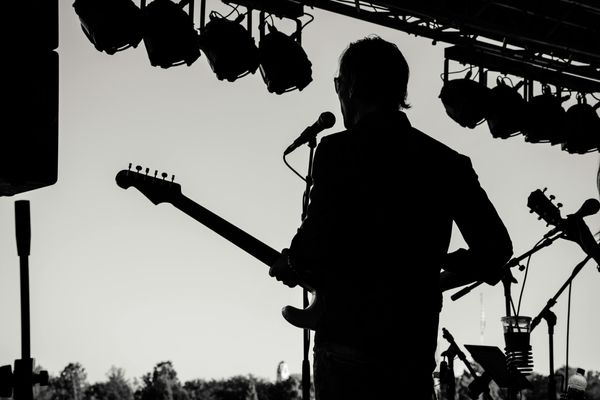
Extreme heat is one of the deadliest natural forces in Australia, but more than half of deaths during heatwaves occur in the most disadvantaged areas of the country. With a hot and dry summer on the way, some councils are implementing new services to protect the most vulnerable.
“Extreme heat is a silent killer,” says Krista Milne, one of two “chief heat officers” recently appointed by the City of Melbourne. “That’s not really understood by the community because of the lack of visual cues.”
Milne and her colleagues have been trying to raise awareness about the dangers of extreme heat, and services the city is offering to help people cool down – including cool rooms in libraries and other community spaces.
In Greater Geelong, the local council has backed a pilot project to create “climate safe rooms” inside the homes of low-income households. This included installing insulation, air conditioning and solar panels to offset the cost. Advocates of the project hope to expand this to more than a 1,000 homes.
Deaths from heat are disproportionately high among people who work outside, the elderly, people with pre-existing conditions, those who are socially isolated and people who don’t have access to a cool space for relief.
“We’re focused on making sure that everyone in our community has access to a cool place to go,” says Milne. “That could be within their home, great. If they don’t have that, then making sure that there is one within a shaded walking distance.”
They’ve also been working on longer-term changes, such as researching which areas of the city store heat, implementing new housing planning standards, increasing shade and tree cover, and retrofitting old buildings.
The policies have to be layered because of cross-cutting vulnerabilities and inequalities. Many people with co-morbidities don’t have a cool place in their homes, for instance. Many who can least afford an air conditioner also live in areas with poor tree cover or access to transport.
Even those who can afford to run an air conditioner can be vulnerable if the power goes out – as happened to hundreds of thousands in Victoria during a heatwave in 2009.
Extreme heat makes the whole body have to work harder, says Dr Arnagretta Hunter, a cardiologist at ANU.
“It affects cognitive function, it affects our mood, it affects our heart and our kidneys,” says Hunter. “And so when we’re looking at outdoor workers, particularly, it’s often heart failure or renal failure.”
Conditions such as these are listed on death certificates, whereas environmental factors like extreme heat or air pollution often aren’t. This means researchers and policymakers have to estimate heat-associated hospitalisations and deaths using models, or piece them together from multiple sources. The estimates can vary greatly.
South Australian coroners recorded 58 deaths during the 2009 southern Australian heatwave, for instance. Victorian coroners estimated 374 “excess deaths” in Victoria during this period. But the Australian Bureau of Statistics recorded just 54 excess natural heat deaths across the country for the entire year.
The chart above uses data from the PerilAUS database, which is based on news and official reports. Even this is likely an undercount due to deaths that aren’t recorded or publicised, and methodological changes over time.
There are generally more deaths from all causes in the colder months, whereas many heat-related deaths are associated with extreme events such as the 2009 and 2014 heatwaves.
Regardless of the data source, what remains consistent is the distribution – there is a disproportionate burden among the more vulnerable.
More than 69% of heatwave deaths between 2001 and 2018 were among those over the age of 60, according to research based on coronial reports.
This age group is particularly vulnerable because they don’t process heat as efficiently as younger adults, says Dr Aaron Bach from Griffith University, who is leading a project developing heatwave mitigation strategies for older populations.
“It’s also a function of socioeconomic status, isolation, and health status. So many older people take medications because they have higher rates of co-morbidities. And those medications [may] also impact your ability to thermo-regulate.
“And the options that might be available to cool down like cooling centres or even turning on the air conditioning, are not available to everybody. Even if they have it they might not be willing to use it”.
A recent survey by the Australian Council of Social Services found that even before the summer begins 74% of people on income support are cutting back on cooling and heating due to increasing energy costs.
Further research has found that more than 60% of deaths during heatwaves between 2001 and 2018 were in the most disadvantaged areas of Australia.
These differences show how different inequalities start to intersect and compound – personal health, housing standards, tree cover and access to amenities such as libraries and transport can all be correlated in some ways. Similar patterns can be seen in exposure to air pollution and Covid outbreaks earlier in the pandemic.
“Our leafier suburbs are those suburbs that are going to be cooler. They tend to be our wealthier suburbs,” says Wendy Walls, a lecturer at the University of Melbourne.
“So there’s that immediate divide between people who are living in well-insulated double-glazed houses, and people who aren’t. And it’s those people who aren’t who are going to have more of an eye on the power bill,” says Walls.
“But then there’s the outside environment as well. It’s about the condition of your suburb, it’s the condition of your house, it’s what amenities you have access to, [such as] a local library that runs air conditioning in a heatwave.”
It’s something Milne is very conscious of. “We are very much focused on targeting both our communications and our intervention to where to the vulnerable members of the community live and go to make sure that everyone [has] access to a cool place to go.”
Dr Edward Jegasothy from the University of Sydney provided feedback on risk and mortality distribution, trends and data. Any errors remain the fault of the author.







